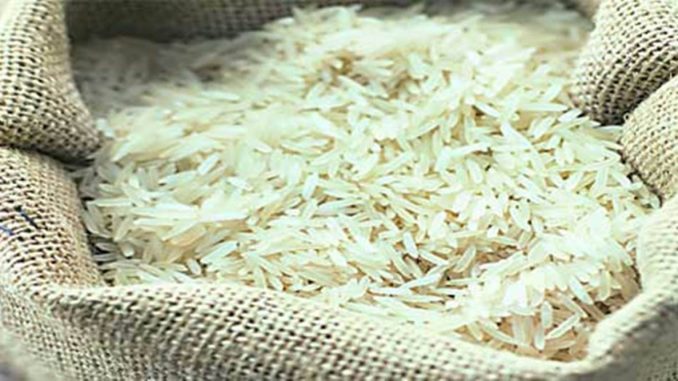
- In his address on the 75th Independence Day (15th August 2021), Prime Minister Modi announced the supply of Fortified Rice in every scheme of the Government of India throughout the country by 2024 in a phased manner.
- According to the Union government, it has distributed around 6.83 lakh tonnes of fortified rice as a part of Public Distribution System (PDS) in second phase of “Fortified Rice Scheme”.
Key Points:
- Government had set aim in 2021, to distribute fortified rice through government schemes by 2024.
- First phase of the distribution started in October 2021. During this phase, fortified rice was distributed through Pradhan Mantri Poshan Shakti Nirman (PM POSHAN) and Integrated Child Development Services (ICDS) schemes.
- In Phase II, 52% of the districts received the fortified rice. Under PDS, 151 districts from 24 states have received fortified rice.
- In the first phase, about 17.51 lakh tonnes of fortified rice were distributed across states since this scheme was implementation in October 2021.
Production Capacity:
- Besides the distribution, production capacity of mills to mix fortified rice has also enhanced to 60 lakh tonnes as against 13.67 lakh tonnes on August 15, 2021.
- The number of mills with blending infrastructure has also increased from 2690 to 6,000 in a year.
- Annual manufacturing capacity of Fortified Rice Kernel (FRK) has increased from 0.9 lakh tonnes to 3.5 lakh tonnes now.
- State-run Food Corporation of India (FCI) and state agencies started procuring fortified rice in 2020-21. Since then, they have procured 145.93 lakh tonnes of rice, so far.
Key to Addressing Nutrition Gap:
- With a section of the populace having limited access to nutritious food, fortification is key in addressing the nutrition gap.
- In a bid to directly address anaemia and micronutrient deficiency in the country, the Centre recently approved a pilot scheme on “Fortification of Rice & its Distribution under Public Distribution System”.
- The government’s food fortification initiative is already taking shape with several states, including Andhra Pradesh, Gujarat, Maharashtra, Tamil Nadu, Chhattisgarh, Uttar Pradesh, Odisha, Telangana, Uttarakhand and Madhya Pradesh, starting the distribution of fortified rice under the pilot programme.
- Fortifying staple foods and condiments with key micronutrients is an effective way of addressing deficiencies.
- Timely adoption of food fortification in social and nutrition security programmes as a part of the fortification initiative will play a crucial role in addressing undernutrition in India.
Need for Rice fortification:
- The country has high levels of malnutrition among women and children.
- According to the Food Ministry, every second woman in the country is anaemic and every third child is stunted.
- India ranks 94 out of 107 countries and is in the ‘serious hunger’ category on the Global Hunger Index (GHI).
- Malnutrition and lack of essential nutrients in poor women and poor children poses major obstacles in their development.
What is food fortification?
- Food fortification is defined as the practice of adding vitamins and minerals to commonly consumed foods during processing to increase their nutritional value.
- It is a proven, safe and cost-effective strategy for improving diets and for the prevention and control of micronutrient deficiencies.
- The Food Safety and Standards Authority of India (FSSAI), defines fortification as “deliberately increasing the content of essential micronutrients in a food so as to
improve the nutritional quality of food and to provide public health benefit with minimal risk to health”.

Fortified rice:
- According to the Food Ministry, fortification of rice is a cost-effective and complementary strategy to increase vitamin and mineral content in diets.
- According to FSSAI norms, 1 kg fortified rice will contain iron (28 mg-42.5 mg), folic acid (75-125 microgram) and Vitamin B-12 (0.75-1.25 microgram).
- In addition, rice may also be fortified with micronutrients, singly or in combination, with zinc (10 mg-15 mg), Vitamin A (500-750 microgram RE), Vitamin B1 (1 mg-1.5 mg), Vitamin B2 (1.25 mg-1.75 mg), Vitamin B3 (12.5 mg-20 mg) and Vitamin B6 (1.5 mg-2.5 mg) per kg.
What are the benefits of Fortification?
- Since the nutrients are added to staple foods that are widely consumed, this is an excellent method to improve the health of a large section of the population, all at once.
- Fortification is a safe method of improving nutrition among people. The addition of micronutrients to food does not pose a health risk to people.
- It does not require any changes in food habits and patterns of people. It is a socio- culturally acceptable way to deliver nutrients to people.
- It does not alter the characteristics of the food—the taste, the feel, the look.
- It can be implemented quickly as well as show results in improvement of health in a relatively short period of time.
- This method is cost-effective especially if advantage is taken of the existing technology and delivery platforms.
About Classic IAS Academy
Classic IAS Academy is one of the Best IAS Coaching in Delhi. Our aim is to help brilliant minds of the country to become civil servants and make them leaders of the future who can take the nation forward. Our two UPSC preparation institutes are located in Bhikaji Cama Place and Karol Bagh, Delhi provide comprehensive coaching programme for civil services aspirants right from preliminary stage to interview stage. Classic IAS Academy is one of the finest IAS Coaching Center in Delhi.

Leave a Reply
You must be logged in to post a comment.